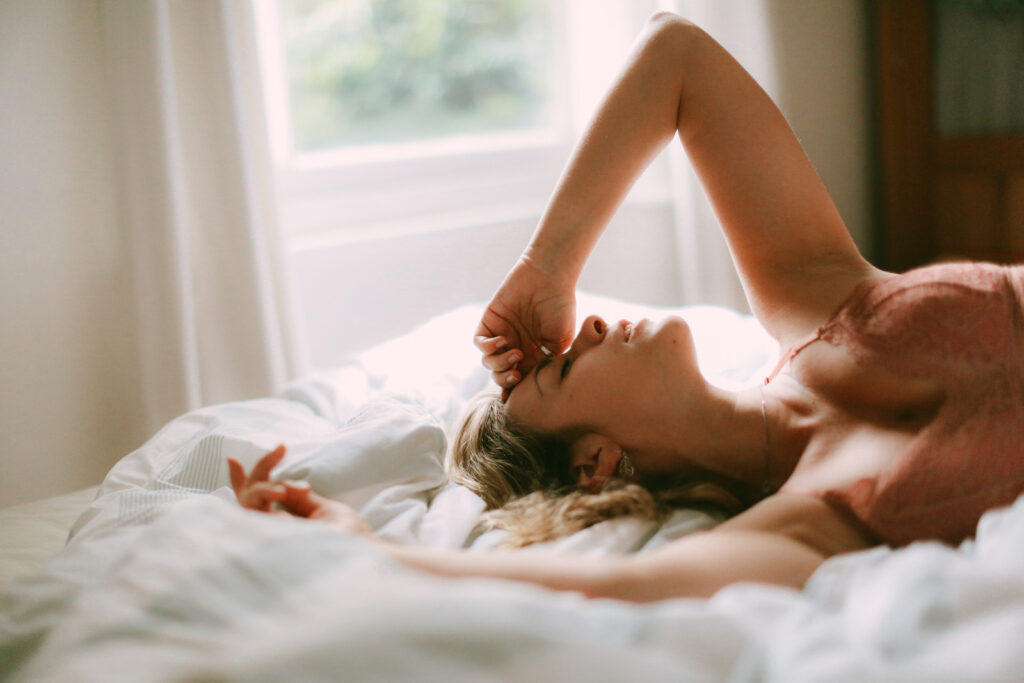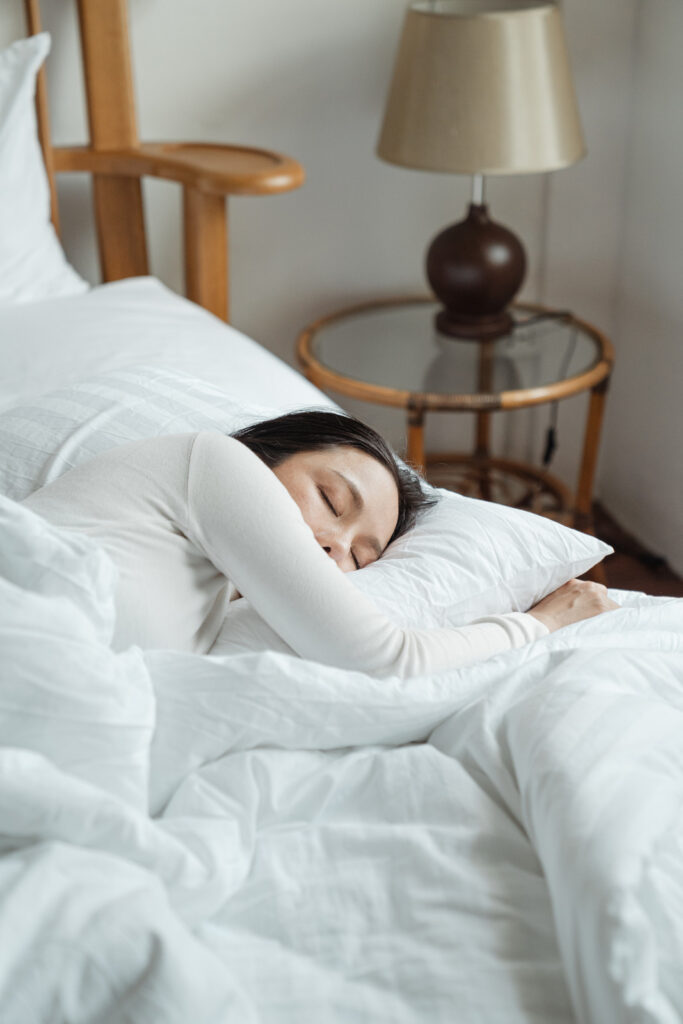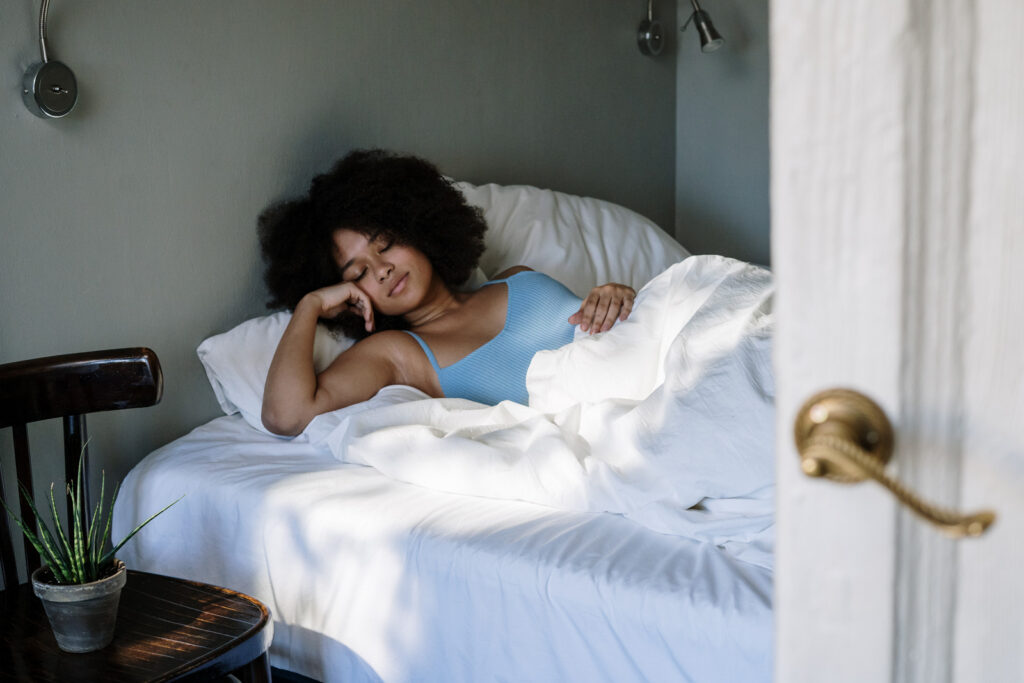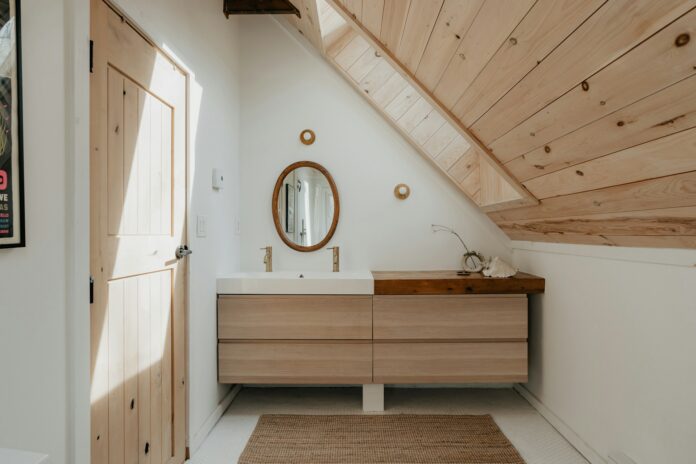
It seems like you can’t wink 40 times before you see yet another article discussing the importance of sleep hygiene. And yep, we realise the irony of us uttering that remark, since we’re always bloody banging on about it ourselves.
But what is often lacking in the discussion, with so much focus falling on mindset, distraction, mentality and the rest, is the physical elements which contribute to a great night’s rest. Today, we’re focusing on the purely solid stuff, with this guide to sleeping in style and the 5 steps to a better night’s sleep via bedroom design.
A GOOD SUPPORT SYSTEM
Though the mattress tends to take all the acclaim, on a more practical level, a sturdy support structure for your bed can help you sleep better. You can have the best mattress in the world, but if the frame and base don’t support it, then your support is going to sag.
According to bed expert Jeff Scheuer, who calls himself The Beducator, that centre support is so crucial. He says that ‘’if your frame doesn’t (provide central support), your mattress set will sink in the centre (and) you will sleep uncomfortably’’.
‘’Another issue will be motion transfer. Typical metal frames, even those of very high quality like Knickerbocker, will wobble a bit. Placing your mattress set on a very heavy-duty bedset, like a solid oak headboard/footboard set, will make even an inexpensive bed feel more substantial.’’
So, choose a frame or bedset which is sturdy and supportive, made from a solid, durable material, to lay the foundation for a good night’s sleep.

THE FOCAL POINT OF THE ROOM
It’s crucial that you arrange your bedroom with your bed as the focus. If you position your bed in the corner of the room, as something of an afterthought, or simply sling a mattress on the floor and sleep where it falls, then of course, the quality of your sleep is going to suffer.
Sleep psychologists strongly recommend that your bedroom is designed as a place for sleep first and foremost, and placing your bed as the focal point of the entire room (feng shui permitting, of course) is a worthwhile statement of intent.
Make the room flow from your bed. Keep the sides of the bed free from tall furniture so you don’t feel crowded when you try to get to sleep at night (or go to empty your bladder in the middle of it) and make sure you have space around your bed, even if it means you have to sacrifice some furniture and other clutter.
The experts recommend a form of ‘stimulus control therapy’, whereby you train your brain to associate the bedroom with sleep by removing distractions such as TV and work from the room. It’s certainly worked for us.

INVEST IN REST WITH THE RIGHT MATTRESS
Too many people make the mistake of cutting costs when it comes to their mattress. They can, after all, be expensive. Though it’s dependent on the type of mattress you choose, the average cost of a king size in 2020 ranges from around £300 to £600.
That doesn’t even represent a particularly long term investment. The National Sleep Foundation suggests that you should change your mattress every 8 years. After 7 years of use, you’ll have spent more than 20’000 hours on your mattress (jeez), which is quite long enough to wear it out.
If you are on a budget, you can find a high-quality mattress in a sale or on offer if you wait and shop around. This way, you can save money and get the best mattress for you. No matter what your budget, you should look at this top mattresses from The Mattress Guide. They have researched and have done the hard work so you don’t have to, and have reviewed and rated the best mattress UK so you know what to look for when you search
PRECISION LIGHTING WITH LED
Task and accent lighting are essential in the bedroom, and the more precise your control of the illumination levels are here, the easier you can control your bedtime routine to be as sleep-healthy as possible.
It’s generally recommended that you manage your descent into dozing rather than plonking yourself straight into bed and expecting the miracle of sleep to come naturally. Many like to read a calming chapter or two before bed to allow them to unwind properly, others like to meditate to process the day’s events, while others still choose a ceremonious removal of make up to mark the day’s end. All of these require task specific lighting, which can be achieved via the tactical placing of lamps (and even candles) around the room, preferably in a variety of wattages for extra control.
For a more all encompassing ‘mood lighting’, perfect for the hour or so before slumber, LED strips are becoming increasingly popular. The experts at LED Supply talk about the use of colour temperature in the bedroom, which ‘’indicates how ‘warm’ or ‘cool’ the light appears. Temperature is measured in Kelvin with higher temps representing cool colours (blueish hue) and lower temps representing warmer colours (yellowish light you would expect from a bulb).’’
For the bedroom, seek out a warm white shade, which comes in the range of 2700 – 3000K.
LEARN YOUR LINENS
We’ve got the mood lighting just so, we’ve eliminated all distractions from the bedside table and beyond, and we’re ready to slip between the sheets. If those sheets are old, scratchy and misshapen, then all your hard preparatory work will be in vain.
Don’t skimp here; considering the average person spends 33 years in bed, spending good money on quality bedding shouldn’t be seen as frivolous. Quite the opposite, in fact; it’s an investment in your future years of quality sleep.
On your journey to sumptuously soft sheets, getting your head around the different types of thread count is important. Thread count is a way of measuring the vertical and horizontal threads per square inch of your bed linen. Put simply, the higher the thread count, the more threads there are in the linen.
Why should you care? Well the higher the thread count, 800 for example, the denser and more luxurious the feeling of the material. However, you needn’t splash out on ridiculously high count sheets; a thread count of 300 (or higher) is all you need for noticeably better quality linen.
No matter which thread count you choose, the primary indicator of quality is the fabric. Steer clear of any polycotton (polyester and cotton mix) and instead opt for linen rich in cotton; think percale with a high cotton percentage, Egyptian cotton with long fibres that promote breathability and softness, or smooth Supima sheets which many regard as the best cotton that money can buy.
THE BOTTOM LINE
Achieving great quality sleep isn’t an act of witchcraft or sorcery. Nor is it something that should be left up to chance. With a little effort and the right investment, you can ensure a proper night’s Zzzeds for years to come.





